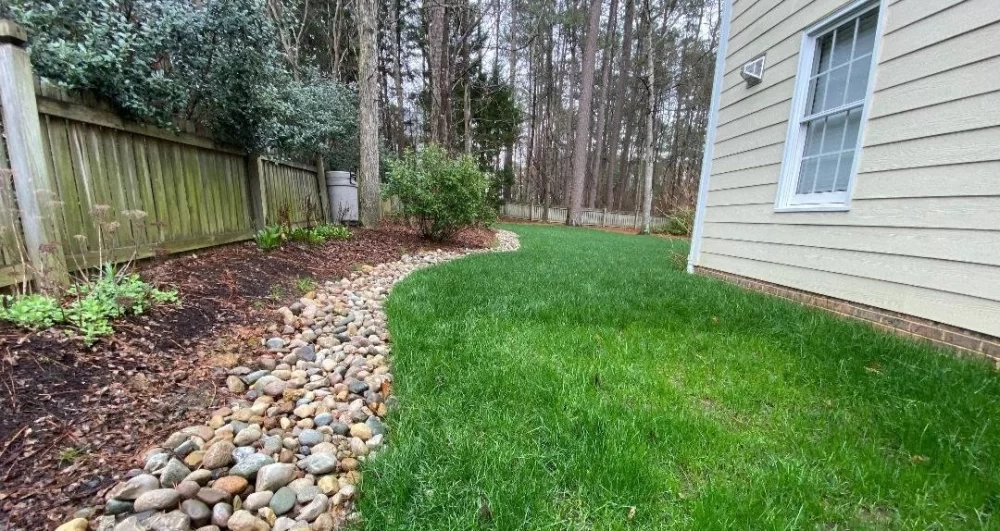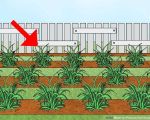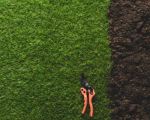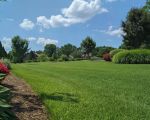
How to Improve Your Lawn’s Drainage System for a Healthier Yard
As a homeowner, I know how frustrating it can be to deal with a soggy, waterlogged lawn. I’ve spent countless weekends wondering how to improve my lawn's drainage system, especially during the rainy months when the grass seems to drown in standing water. But after some trial and error, along with advice from experts, I found several effective solutions that not only saved my lawn but also made my yard the envy of the neighborhood. If you’re facing similar drainage issues, I’m here to share what worked for me and help you get your lawn back in shape.
1. Understanding the Problem: Why Is Your Lawn Waterlogged?
Before diving into the solutions, it's essential to understand why your lawn may be experiencing drainage issues. For most lawns, poor drainage happens due to soil compaction, poor grading, or the presence of clay-heavy soil, which doesn’t allow water to seep through effectively. For instance, I noticed that my yard had a low-lying spot where rainwater would pool and stay for days. This was because the ground wasn’t sloped correctly to allow proper water runoff. Understanding the root cause of your drainage issue is key to choosing the right fix.
2. Improve Your Lawn’s Soil Quality
Improving the soil quality is one of the first things I recommend when tackling drainage issues. Over the years, I’ve learned that healthy, well-aerated soil will drain water much better than compacted, heavy clay soil. Aeration is a simple yet highly effective technique. I used a garden fork to poke holes in the ground, allowing water to reach the roots of the grass more effectively. For a larger yard, you can rent a mechanical aerator to save time.
If your soil is heavy with clay, you might want to mix in organic matter such as compost or sand to improve its texture and drainage capacity. This is something I tried with great success. After spreading compost across the surface and working it into the top few inches of soil, I noticed a significant improvement in how well water drained after rainfall.
3. Adding French Drains: A Lifesaver for Problem Areas
One of the most effective drainage solutions I implemented was the installation of a French drain in the low-lying area of my yard. I had read about French drains online, and after some research, I decided to give it a try. A French drain is essentially a trench filled with gravel and a perforated pipe that redirects water away from problem areas. It’s a straightforward project, but you’ll need a bit of time and effort. You’ll need to dig a trench about 6 inches deep and 8 inches wide, then line it with landscape fabric to prevent soil from entering the drain. I used a 4-inch perforated PVC pipe, which I placed in the trench and covered with gravel. Now, instead of puddles forming after rain, the water is redirected to a drier area of my yard.
4. Installing a Dry Well for Excess Water
If your lawn has chronic drainage problems, installing a dry well might be the solution. A dry well is a large, underground container that holds excess water temporarily and allows it to gradually seep into the ground. I decided to install one in an area where water seemed to collect the most. The process involved digging a large hole, placing a prefabricated dry well in the ground, and connecting it to the French drain I installed earlier. This helped my yard manage water overflow during heavy rains and kept the surface of the lawn dry.
5. Rethinking Your Lawn’s Grading
Grading is something I didn’t think much about until I started facing serious drainage issues. A proper slope ensures that water flows away from your house and lawn. My lawn had areas where the ground sloped towards the house, causing water to collect around the foundation. To fix this, I brought in topsoil to level the ground and created a slight slope away from the house. This made a world of difference in preventing standing water around my yard.
6. Maintaining Proper Lawn Care to Prevent Drainage Issues
Proper lawn maintenance can also help improve your lawn’s drainage. Over the years, I’ve learned that keeping the lawn healthy and free of debris helps water move through the soil more easily. Regular mowing, dethatching, and removing leaves or other organic matter from the lawn’s surface allows rainwater to reach the soil instead of being blocked by layers of material. I also make sure my lawn is adequately fertilized to keep it growing strong and thick, which helps with soil aeration.
7. Consider Installing a Rain Garden
If you’re looking for a more eco-friendly solution to water drainage, consider installing a rain garden. This involves creating a small garden designed to capture and absorb rainwater. I created a rain garden in an area of my lawn that collected rainwater after every storm. It’s planted with water-loving plants, such as ferns and irises, that thrive in moist soil. Over time, I’ve noticed that the rain garden not only adds beauty to my lawn but also helps absorb excess rainwater, preventing it from flooding the rest of the yard.
8. Preventative Measures: Keeping Drainage Problems at Bay
Once you’ve made these improvements, it’s essential to keep up with lawn care to prevent future drainage issues. I always make sure to regularly check for signs of waterlogging, especially during rainy seasons. Keeping up with aeration and ensuring that the French drains and dry wells remain clear of debris is crucial. Also, periodically reassessing the grading of my lawn helps me stay ahead of any potential water problems.
In conclusion, improving your lawn’s drainage system doesn’t have to be an overwhelming task. Whether it’s soil aeration, installing a French drain, or adjusting your lawn’s grading, there are several ways to fix drainage problems and maintain a healthy, thriving yard. I hope the tips I’ve shared help you tackle your lawn’s drainage issues and keep it looking great throughout the year!








